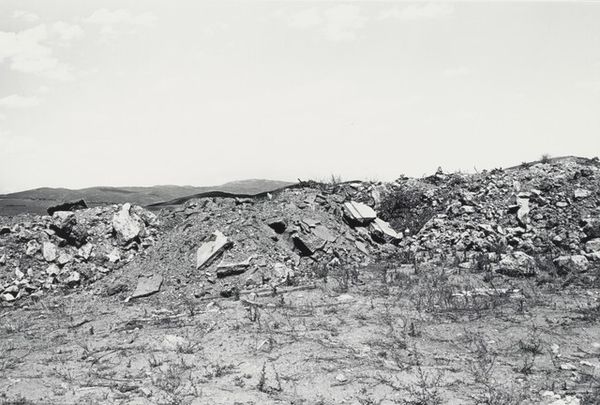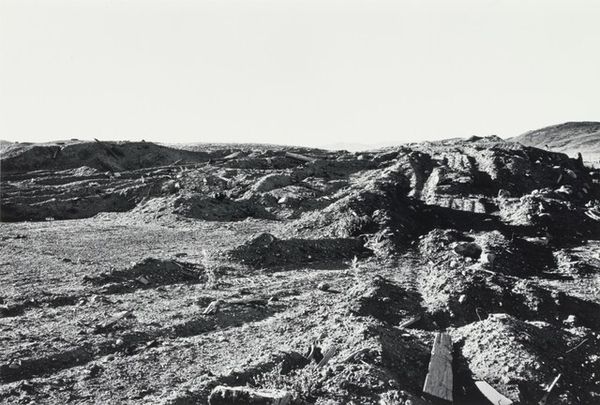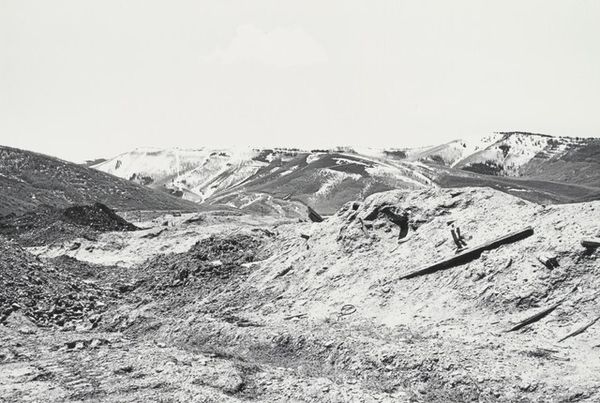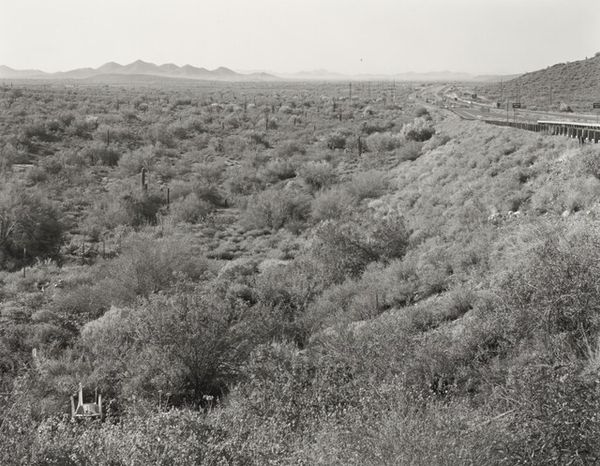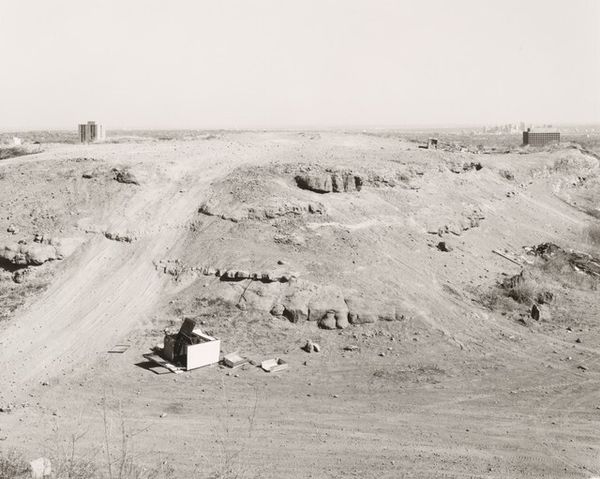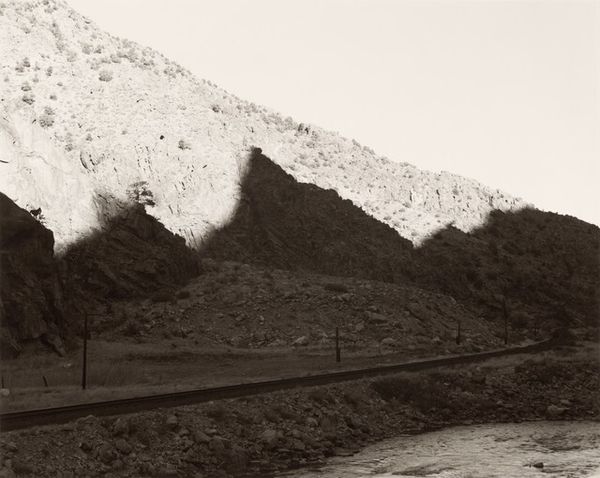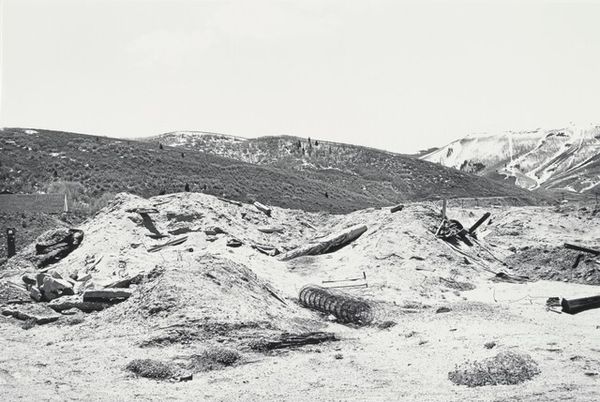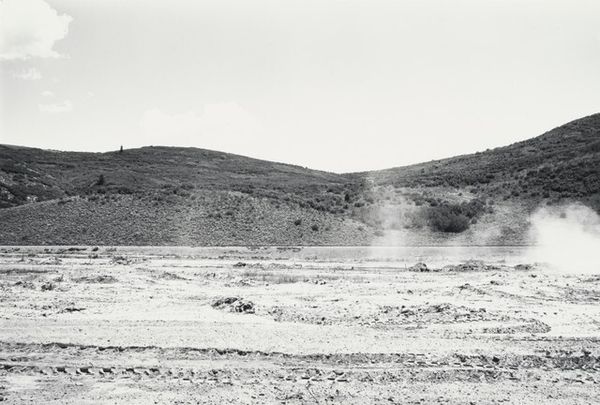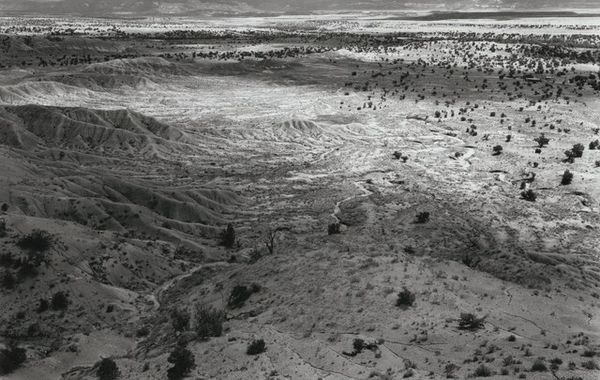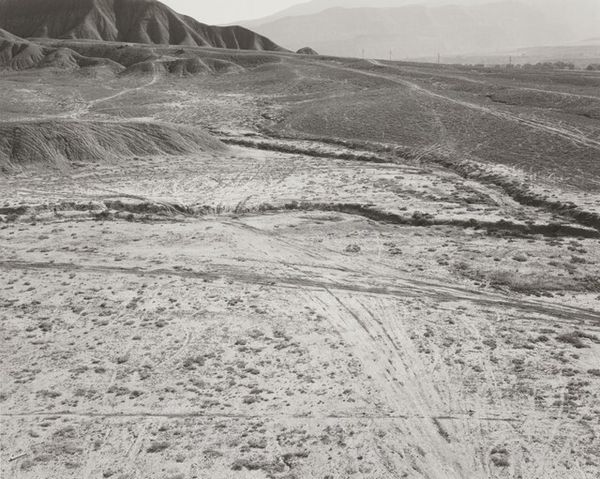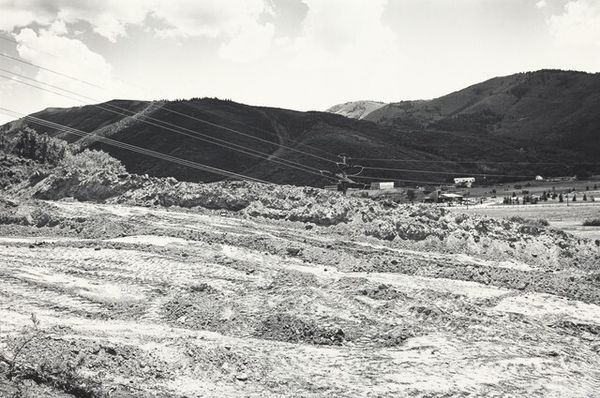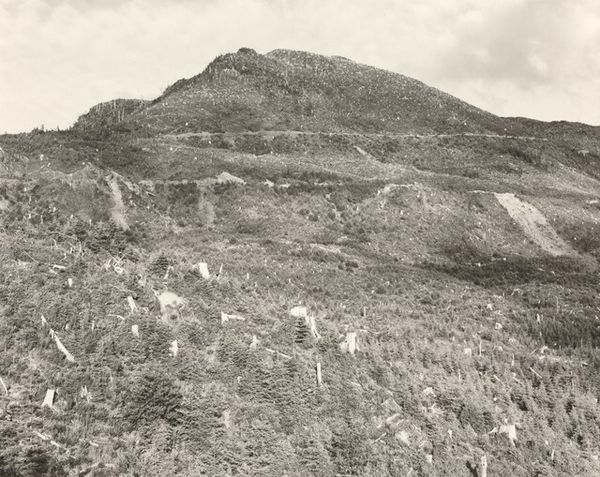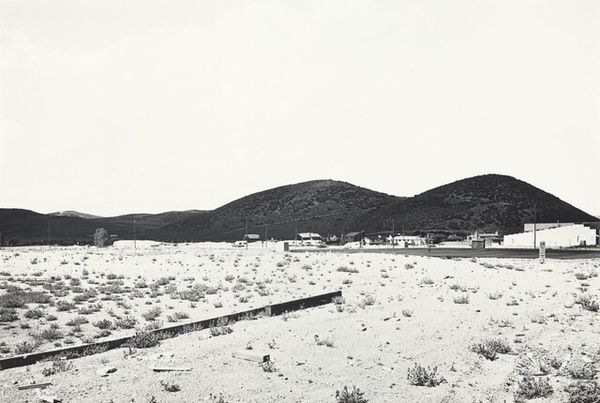
Between West Sidewinder Drive and State Highway 248, Looking Northwest 1979
0:00
0:00
photography
#
conceptual-art
#
black and white photography
#
postmodernism
#
landscape
#
photography
#
black and white
#
monochrome photography
#
monochrome
#
monochrome
Dimensions: image: 16.25 × 24.13 cm (6 3/8 × 9 1/2 in.) sheet: 20.32 × 25.4 cm (8 × 10 in.)
Copyright: National Gallery of Art: CC0 1.0
Editor: Here we have Lewis Baltz's photograph, "Between West Sidewinder Drive and State Highway 248, Looking Northwest," created in 1979. It’s a black and white image, seemingly documenting a desolate landscape. What immediately strikes me is the sheer banality of the subject matter. What do you see in this piece? Curator: That banality is key, isn't it? Baltz, working in the wake of the New Topographics movement, is deeply concerned with the transformed American landscape, specifically the impact of industrialization and suburban development. The apparent "nothingness" you observe actually points to a critical commentary on the increasing homogenization and exploitation of land. Editor: So it’s less about the beauty of nature and more about its… alteration? Curator: Precisely. Think about the title itself: it's descriptive, almost clinical, devoid of any romanticism. Baltz is documenting a specific, unremarkable location. It resists the picturesque. Where might that highway and "West Sidewinder Drive" lead? Editor: I guess to more of the same? More development, more... piles of dirt? Is he suggesting that this unremarkable scene is, in fact, typical? Curator: Exactly. It's a reflection of broader societal shifts and a critique of the pervasive human intervention reshaping the American West. This photograph isn't about escape; it's about confrontation with the everyday realities of a changing landscape. What kind of "public role" for photography is Baltz advocating? Editor: To make us see, really *see*, the consequences of our actions? This photograph seemed simple at first glance, but now it appears incredibly charged with meaning. Curator: Precisely. It is a reminder that the aesthetic value is embedded in how we choose to critically respond to these changing visual, spatial, and societal patterns. Hopefully you'll remember this lesson as you discover other artists’ perspectives.
Comments
No comments
Be the first to comment and join the conversation on the ultimate creative platform.
